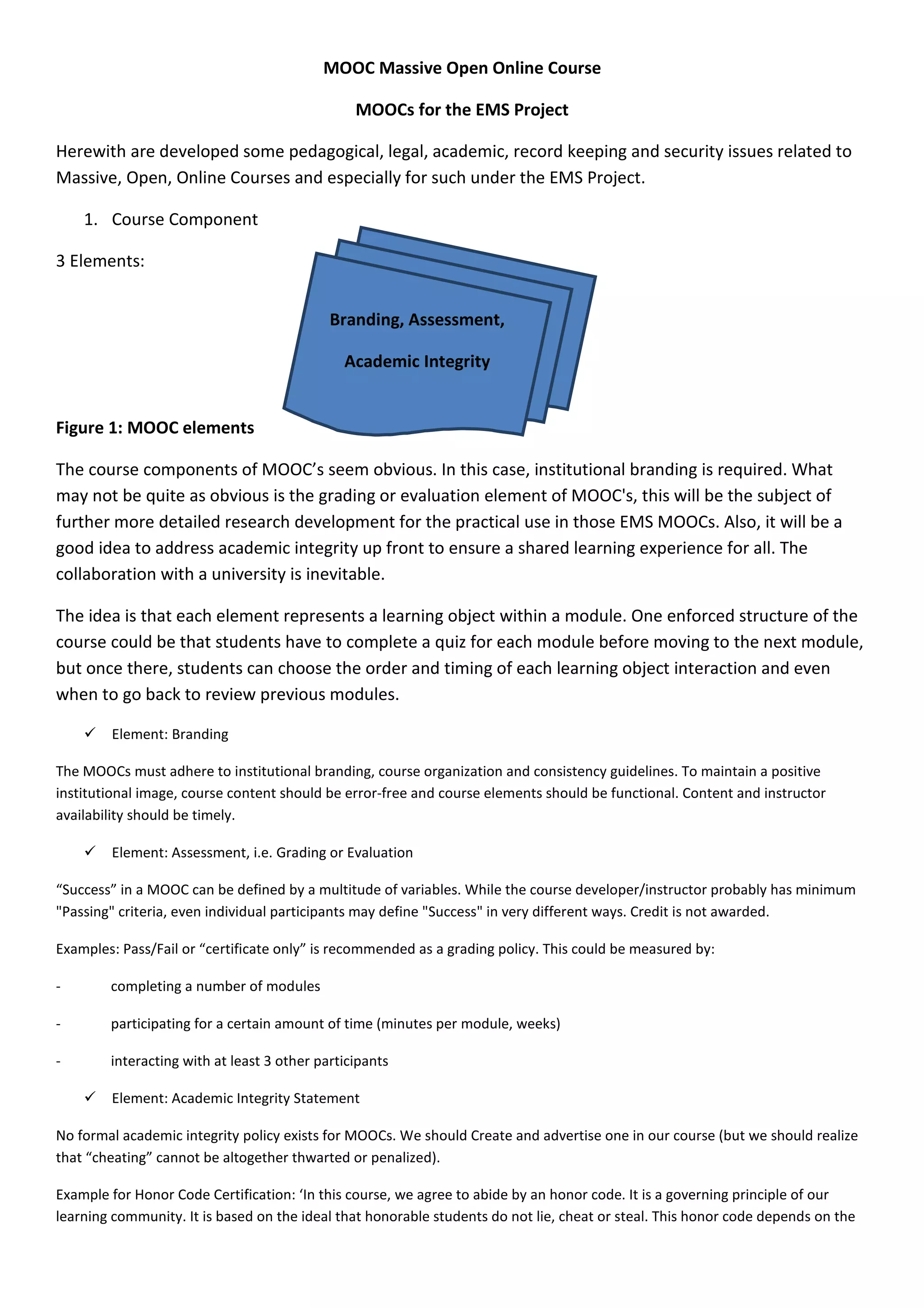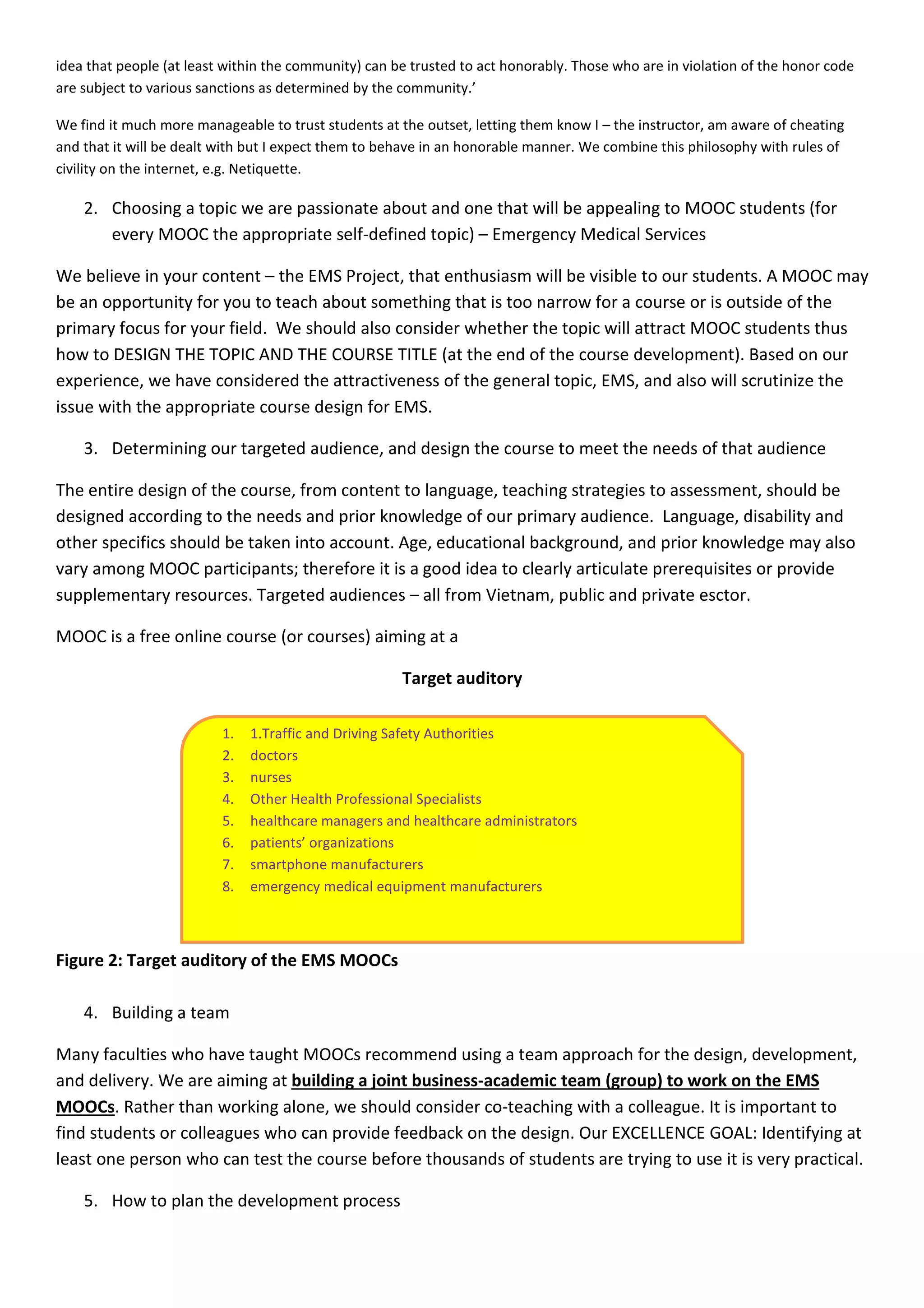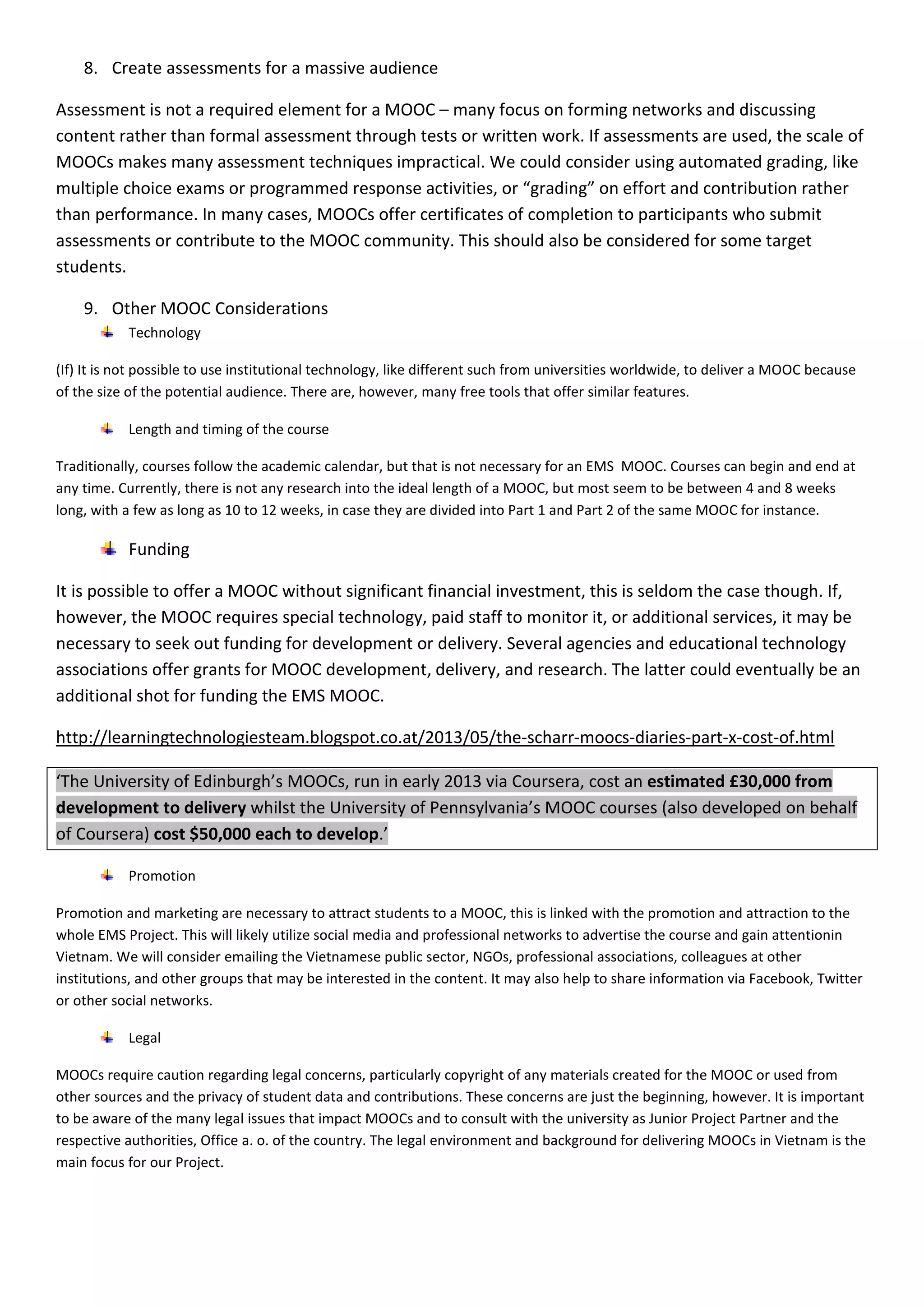This document discusses considerations for developing a Massive Open Online Course (MOOC) on emergency medical services (EMS) as part of the EMS Project in Vietnam. It identifies 9 key elements to consider: 1) course components of branding, assessment, and academic integrity, 2) choosing an appealing topic focused on EMS, 3) determining the targeted audience, 4) building a collaborative team, 5) creating a development timeline, 6) establishing learning outcomes, 7) designing communication strategies, 8) creating assessments, and 9) addressing other issues like technology, length, funding, and promotion. The goal is to develop a free online EMS course that can educate various audiences in Vietnam.



